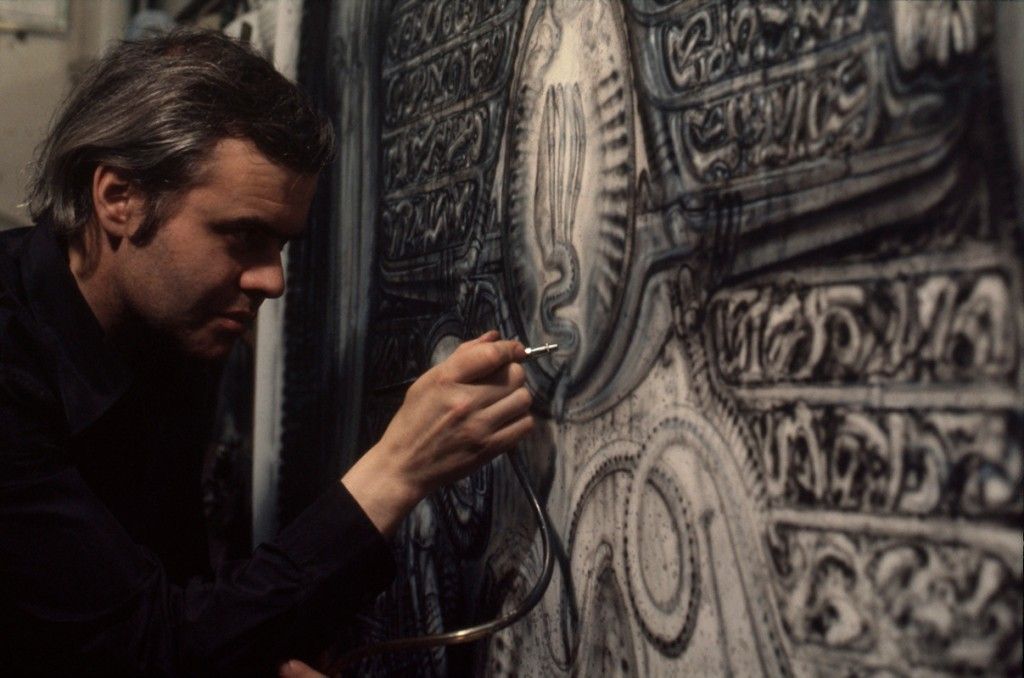Director Ridley Scott’s 1979 sci-fi horror film Alien carried the tagline “In space, no one can hear you scream.” As superb as Scott’s direction was, coaxing genuine performances out of a talented cast, it is that film’s original xenomorph which haunts our nightmares to this day. The creature’s iconic, influential design was the brainchild of Swiss artist H.R. Giger, who has sadly passed away.
Giger reportedly died in a Swiss hospital on Monday, May 12th, 2014 from injuries sustained in a fall. He was 74 years old. The news was confirmed by Sandra Mivelaz, administrator of the H.R. Giger museum in Gruyeres, western Switzerland.
Giger was born Hans Rudolf “Ruedi” Giger on February 5, 1940 in Chur, Switzerland. He was discouraged from pursuing art by his chemist father, who preferred he enter the pharmaceutics industry. Instead, Giger moved to Zürich to study interior and industrial design at the School of Commercial Art before attending the School of Applied Arts, where he studied architecture and industrial design, concentrations which are heavily reflected in his later artwork.
When it came to his art, Giger said the following to Starlog in 1979:
“My paintings seem to make the strongest impression on people who are, well, who are crazy. If they like my work they are creative … or they are crazy.”

Giger had an intense romance with Swiss actress Li Tobler until her suicide in 1975 and his 1979 marriage to Mia Bonzanigo only lasted a year and a half. He is survived by spouse Carmen Maria Scheifele Giger, who remains curator of the H.R. Giger Museum in Gruyères, Switzerland.
Giger will be forever known to horror fans as creator of the original xenomorph in Alien, and he also designed “The Derelict,” the downed ship where the first creature is discovered, as well as the famous “Space Jockey,” the creature whose relative origins would be explored in Ridley Scott’s 2012 Prometheus.
He went on to contribute work to Aliens, Alien 3, Alien Resurrection (he created several unused designs and was not credited on the film), the creature Sil from Species, an unused, radically different Batmobile design for Batman Forever, and created several original xenomorphic murals for Prometheus.
One fascinating unrealized film project is explored in the upcoming documentary Jodorowsky’s Dune, which chronicles El Topo director Alejandro Jodorowsky’s never-made adaptation of Frank Herbert’s classic sci-fi novel, and which featured extensive designs by Giger.

Giger worked with pen and ink before discovering the airbrush, which became one of his favorite mediums, creating nightmarish tableaus which often featured fetishistic sexual imagery within cold, machine-like trappings in a style he named “biomechanical.” His work was influenced by his lifelong history of night terrors, and his work reflects imagery found in the work of horror writer H.P. Lovecraft. He also named painters Ernst Fuchs and Salvador Dalí as major influences and was a personal friend of 1960’s counterculture icon Timothy Leary.
Beyond his paintings – which were frequently featured in Omni magazine – and movie work, Giger also directed several short documentaries, designed furniture, and created album covers for artists such as The Dead Kennedys, Debbie Harry, Emerson, Lake & Palmer and Korn, whose front man Jonathan Davis even commissioned a custom-designed microphone stand. Several Giger Bars were built in his native Switzerland, with interiors designed under his personal supervision.
Despite disowning much of the end result from his Hollywood collaborations, Giger’s Alien designs have proven to be immortal, and remain incredibly influential and endlessly effective. For all of the artistry found in Ridley Scott’s original film, Giger’s designs will forever remain iconic.
Everyone here at Screen Rant would like to express our most sincere and heartfelt condolences to Giger’s friends and family, as well as to his fans around the world and anyone who found their imaginations racing into overdrive when confronted with his challenging, surreal, fascinating artwork.
_____
R.I.P. Hans Rudolf Giger: February 5, 1940 – May 12, 2014.




